Five things to know about the restoration of the Apollo MCC
2018-04-16
You’ve heard rumblings about the historic Apollo Mission Control Center (MCC) restoration, but here’s what you really need to know about the undertaking.
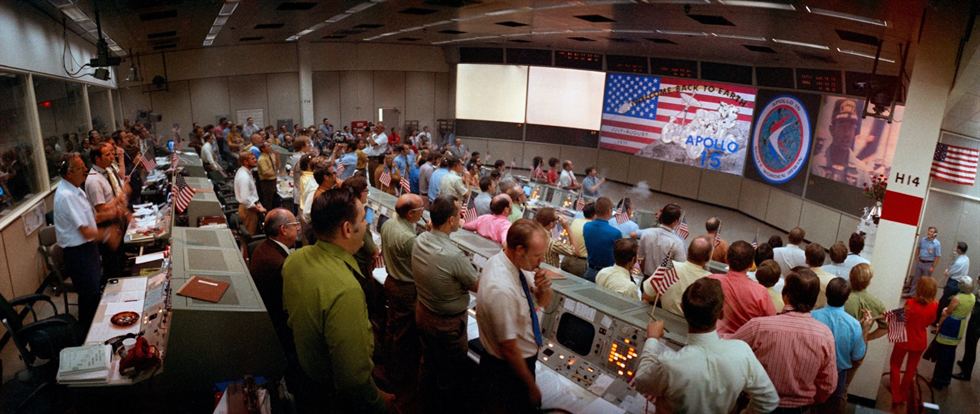
An overall, wide-angle lens view of activity in the Mission Operations Control Room in the Mission Control Center minutes after splashdown of the Apollo 15 lunar landing mission. Image Credit: NASA
1. Restoration is set to be finished by July 2019.
Restoration has begun, and the first two rows of consoles have been removed from the room and transferred to the Kansas Cosmosphere where they are being restored. The restoration is scheduled to be completed before July 20, 2019 for the 50th anniversary of the Moon landing.

An overall, wide-angle lens view of activity in the Mission Operations Control Room in the Mission Control Center minutes after splashdown of the Apollo 15 lunar landing mission. Image Credit: NASA
1. Restoration is set to be finished by July 2019.
Restoration has begun, and the first two rows of consoles have been removed from the room and transferred to the Kansas Cosmosphere where they are being restored. The restoration is scheduled to be completed before July 20, 2019 for the 50th anniversary of the Moon landing.
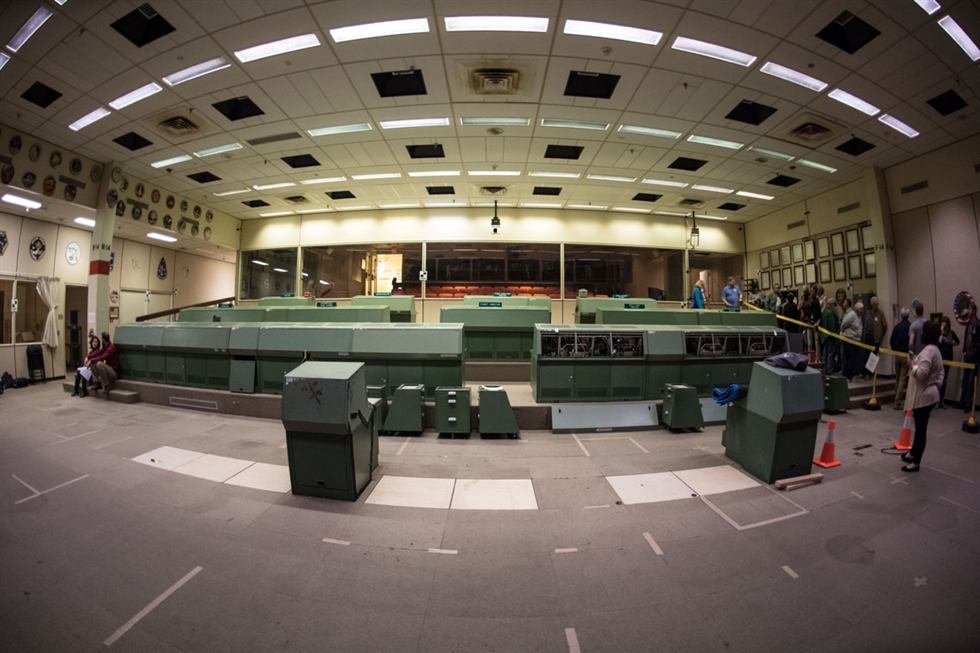
View of the Apollo Mission Control Room after the first two rows of consoles were removed and shipped to the Kansas Cosmosphere for restoration. Image Credit: NASA
2. The project is based on the Apollo 11 and 15 missions.
The control room will be restored to look like it did during the Apollo 11 mission. However, the consoles in the room will reflect the apex of the Apollo program, and will be in the configuration that was used during Apollo 15 and the missions that followed.
3. Every detail matters, from the p-tube stations to the ceiling tiles.
The pneumatic tube (P-tube) stations, which flight controllers used to send notes around the building, have been cut and sent to the Kansas Cosmosphere for restoration. Space Shuttle Flight Director Bill Reeves said, “There was a network of this pneumatic tube system in the building, and that was your email in those days. Just everything was so different from what we do today.”
The ceiling tiles that will be installed in the Apollo MCC have also been successfully replicated. The hole pattern and size will be laser cut into the tiles while parts of the ceiling grip and appurtenances will be re-worked to achieve a historically accurate look.
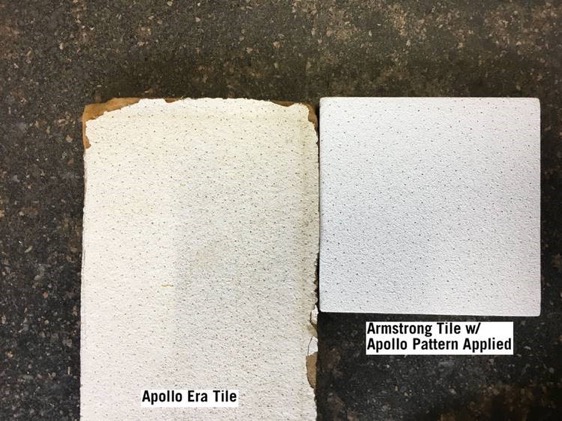
This image shows a comparison of an Apollo-era ceiling tile with the historically accurate laser cut ceiling tile that will be used in the restored Apollo MCC. Image Credit: NASA
The control room will be restored to look like it did during the Apollo 11 mission. However, the consoles in the room will reflect the apex of the Apollo program, and will be in the configuration that was used during Apollo 15 and the missions that followed.
3. Every detail matters, from the p-tube stations to the ceiling tiles.
The pneumatic tube (P-tube) stations, which flight controllers used to send notes around the building, have been cut and sent to the Kansas Cosmosphere for restoration. Space Shuttle Flight Director Bill Reeves said, “There was a network of this pneumatic tube system in the building, and that was your email in those days. Just everything was so different from what we do today.”
The ceiling tiles that will be installed in the Apollo MCC have also been successfully replicated. The hole pattern and size will be laser cut into the tiles while parts of the ceiling grip and appurtenances will be re-worked to achieve a historically accurate look.

This image shows a comparison of an Apollo-era ceiling tile with the historically accurate laser cut ceiling tile that will be used in the restored Apollo MCC. Image Credit: NASA
4. The restored Apollo MCC will be a blast from the past.
In 1985, the Apollo MCC was designated a National Historic Landmark by the National Park Service. Over the years, while work was done to partially restore the Apollo MCC to its Apollo-era configuration, it was never fully updated. However, during the current restoration, all aspects of the room will be restored, from the consoles and ashtrays to the furniture and even the carpet, which will be recreated in the now-discontinued 1960s style.
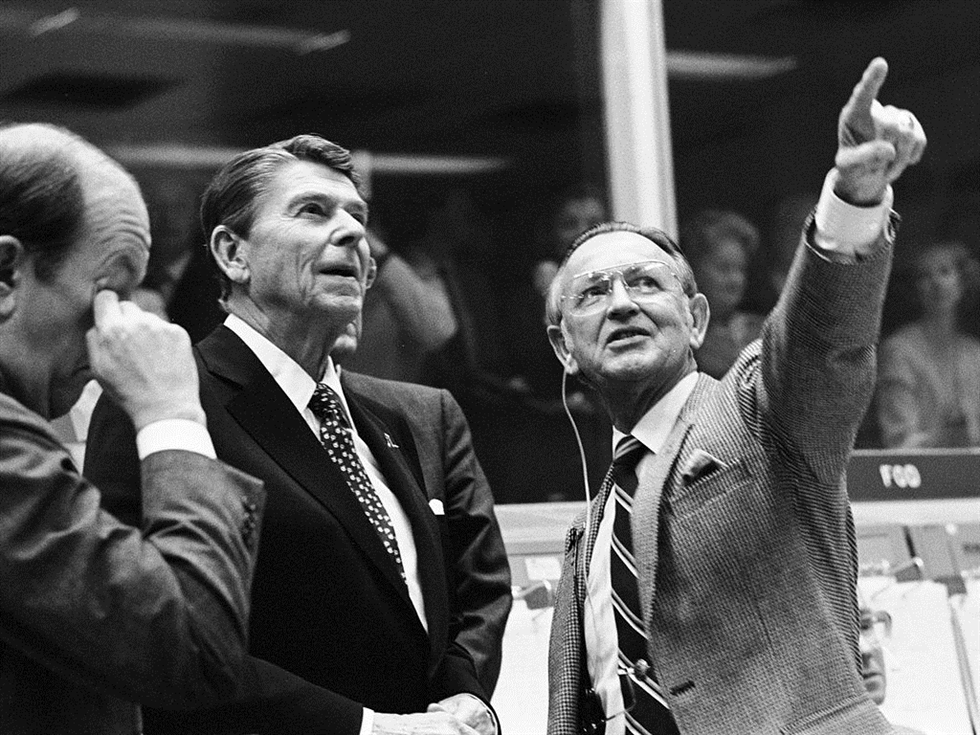
President Ronald Reagan is briefed by JSC Director Christopher C. Kraft Jr., who points toward the orbiter spotter on the projection plotter in the front of the mission operations control room in Johnson Space Center's Mission Control Center. This picture was taken just prior to a space-to-ground conversation between STS-2 crew members Joe H. Engle and Richard H. Truly, who were orbiting Earth in the space shuttle Columbia. Image Credit: NASA
5. NASA’s legacy will live on through the MCC.
The restoration of this National Historic Landmark will create a space for the Apollo generation to remember an incredible time in history and keep that inspiration alive for future generations. Lessons learned from Apollo set the stage for subsequent NASA programs, including the Space Shuttle, International Space Station and Orion.
In July 2019, visitors will be able to experience the excitement of the Apollo 11 Moon landing from the visitor viewing room, and will learn firsthand how the accomplishments of the generation before catapulted the future of space exploration.
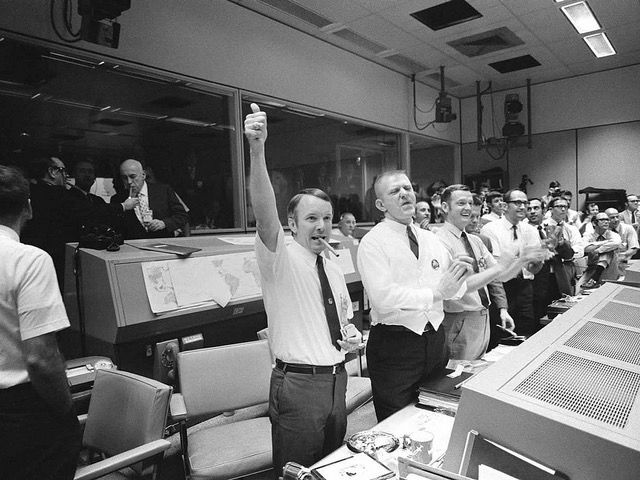
Three of the four Apollo 13 flight directors applaud the successful splashdown of the Command Module "Odyssey" while Dr. Robert R. Gilruth, director of the Manned Spacecraft Center (MSC), and Dr. Christopher C. Kraft Jr., MSC deputy director, light up cigars (upper left). The flight directors, from left, are: Gerald D. Griffin, Eugene F. Kranz and Glynn S. Lunney. Image Credit: NASA
Sandra Jones
NASA Johnson Space Center







